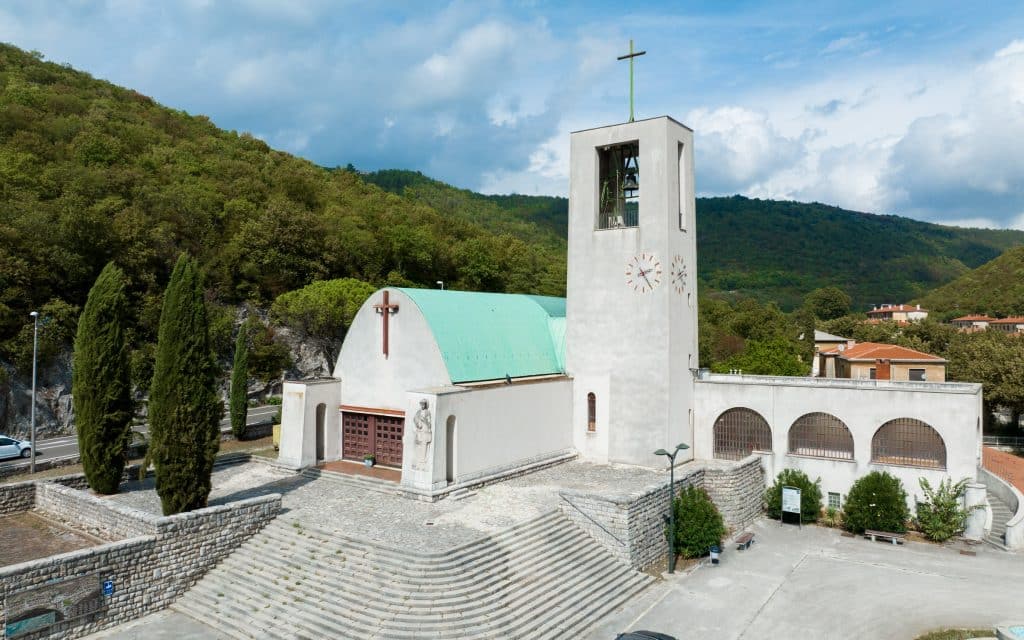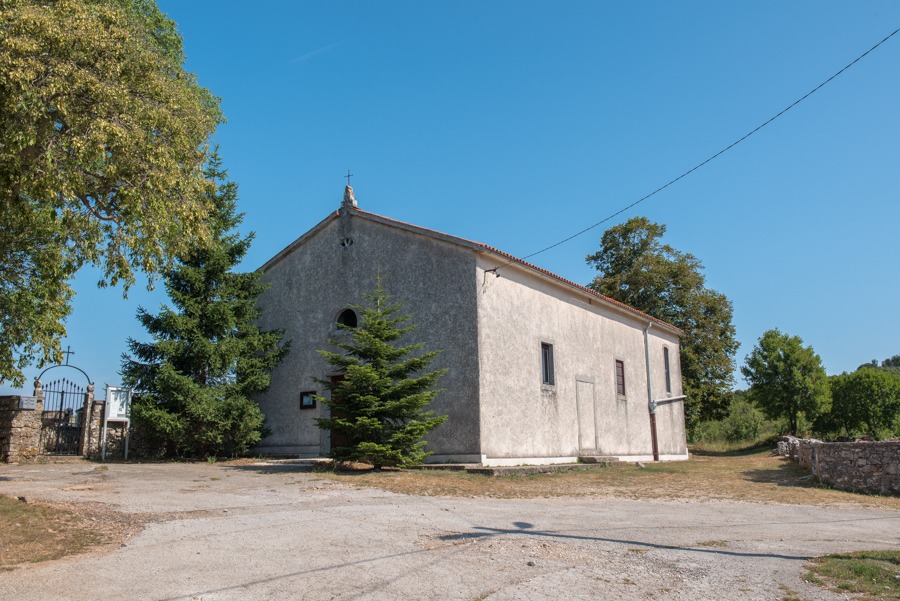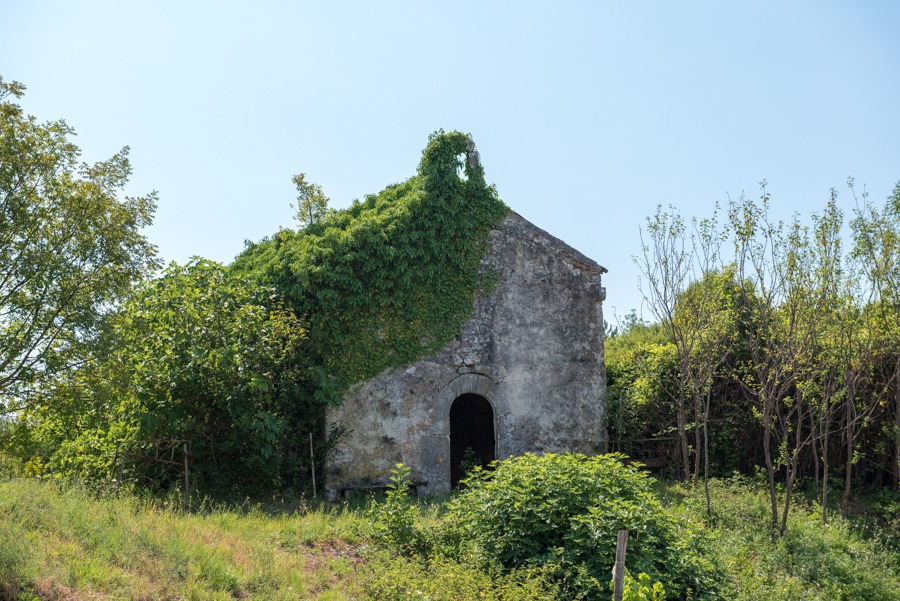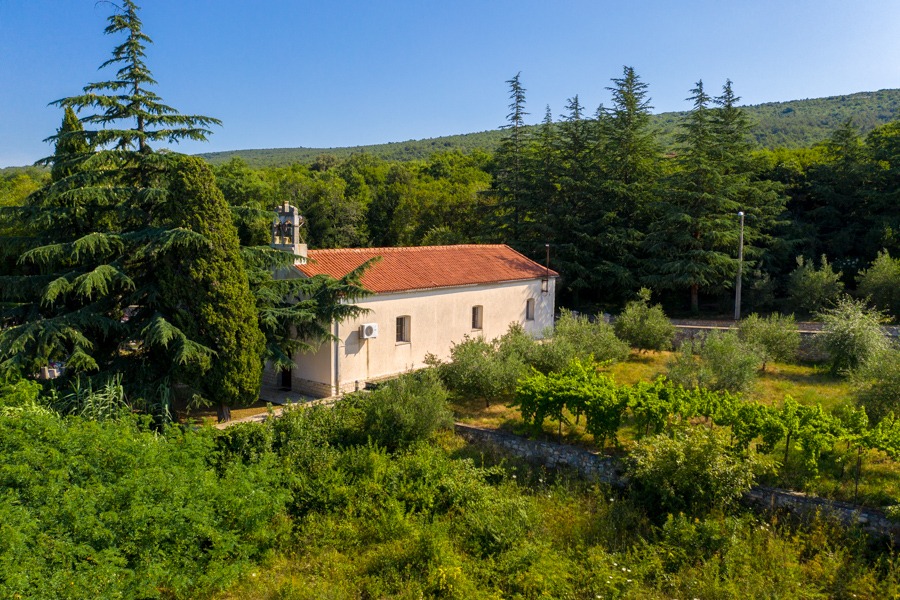Church of St. Barbara - Raša
and a true example of modernist and rationalist conception of architecture with extraordinary profound light and shadow show and a skillful use of volume. In terms of design Pulitzer, as a German student, takes similar examples of churches that had been built in Germany. The cubic bell tower of a rectangular shape, attached to the church, certainly makes its contribution to the vertical views of the town with its twenty-five meter high tower. By the east entrance of the church there is a space associated with the church intended for the people, like a covered lopica (a portico) in Istrian medieval churches. Architecturally, it creates a counterbalance to the arcades on the southern part of the square and constructively regulates the ventilation in the square. Unfortunately, in the mid-1990s the covered part by the east entrance was framed with steel-glass construction. On the right entrance pylon of the church there is a stone relief of St. Barbara, made by famous Trieste- sculptor Ugo Carà.
St. Lucija – Skitača
The building got its present shape in 1924, when the construction of the bell tower begun, which remained unfinished until today. It is a one-nave Baroque church with an apse inside the church. The main marble altar is dedicated to St. Lucy, while the two wooden side altars are dedicated to St. Anthony of Padua and the Blessed Virgin Mary. There is a cemetery next to the church.
St. John – Brovinje
right next to Holcim cement factory quarry there are a church and an abbey dedicated to St. John. The 14th century church of St. John is a one-nave Romanesque church with a semicircular apse. It was built of long narrow semi-worked thin squares, arranged in proper and equally thick layers. The entrance and the bell cote on the façade are of Gothic origin. The interior is decorated with early 15th century frescos. There is a cemetery next to the church, which was partially explored at the beginning of 1990s. Near the church there are ruins of St. John’s abbey. An Early Bronze age hill fort hill and a medieval tower Turan, owned by the Battiala family, were once located on the near-by Gradac hill. Both were destroyed at the beginning of 1990s due to quarry expansion.
St. Sebastijan – Škrokoni
on the road heading to Sv. Marina. A Romanesque church dedicated to St. Sebastian was built on the south edge of the village. The church is a part of a larger archaeological zone, with traces of settlement which date back to Antiquity and the medieval time. The church was built in the 12th/13th century using scrap stone arranged in equal layers. A constructive stone frame of the main entrance has got a typical Romanesque semicircular arch. The only window is set in the middle of the south wall. In the 18th century a Roman inscription was found in the church, with the name Labin being mentioned for the forst time- ‘res publica albonessium’. The inscription is now stored in the museum in Labin.
St. Lawrence- Sv. Lovreč Labinski
(Diminići). It is a one-nave 17th century Baroque church with a semicircular presbytery. Two inscriptions on the façade made in 1653 provide exact construction and renovation dates. The main altar, made of stone with incrustation, dates back to the 17th century, and according to a local legend it was brought here from Dubašnica on the isle of Krk. The altar is made of marble, and includes a tabernacle and the altarpiece depicting Blessed Virgin Mary with a Child; St. Lawrence and St. Francis of Assisi. Parts of the former 17th century wooden altar were used and put onto the confessional, while the two wooden statues are still held behind the main altar. There is a cemetery next to the church.
St. Augustin – Barbići
The church of St. Augustine is located approximately 100 m northwest from the northern edge of the village. The church has got a rectangular plan with a quadrangular apse and a semicircular vault. The main entrance is made of massive stone monoliths with a flat horizontal lintel. There is a small narrow vertical window framed with stone beams on the front façade. A bell cote is placed on the top of the façade. A Roman inscription built in the back church wall suggests there is a archaeological site near the church.
St. Matej – Prodol
It is situated next to the old village road heading from a hamlet village of Mihaljini to Skitača. Gothic one-nave rectangular building is covered with a cross-ribbed vault, the same being divided into two parts. Interior walls are decorated with frescos, which are severely damaged and the saints are hardly recognizable. Among the usual and popular saints, such as St. Michael, St. George and St. John the Baptist, there is one, wrapped as an infant. It is St. Lazarus from Bethany, a brother to Martha and Mary, who was restored to life four days after his death. As it now can be seen, the frescos are similar to the younger, Gothic fresco layer in St. Martin’s church in Sv. Lovreč Pazenatički. This church was built in the 14th/15th century. It once belonged to the Scampicchio family. The church, completely renovated in 2012, is now registered as a cultural heritage of the Republic of Croatia.








